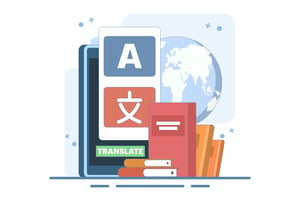Translation is not only an act of linguistic transfer, but also a complex process involving cultures, contexts, and nuances that must be transferred from one language to another with precision and faithfulness. It has always been essential for building relationships around the world.
It is said that a good translation should not look like a translation and translators often use certain techniques to make the translated text read as if it had been written originally in the target language. The translation techniques presented below are syntactic or semantic mechanisms, strategies, and terminological or grammatical turns of phrase used by translation professionals to effectively adapt a wide range of linguistic and cultural contexts so that the translations are faithful to the original, effective in their communication, and culturally appropriate for the target context.
Most common translation techniques
Literal translation
This technique translates word for word. It is a rare strategy, because it requires a great deal of parallelism between the grammatical and semantic structures of the two languages. It usually works only when the word has a unique equivalence in the other language.
Borrowing
Semantic borrowing is a technique that basically consists of using untranslated words. It is used when there is no exact equivalent in the target language or when we want to preserve a specific term because of its cultural significance or its international recognition in the source language. It could also be the case that the term is already established in the target language. These words are usually highlighted using italics to indicate their foreign origin.
Adaptation
Adaptation or cultural equivalence involves a process in which the cultural elements in the original text are modified or adjusted to better fit the culture and context of the target language. In other words, the aim is not only to convey the meaning of the text, but also to ensure that it is understandable and relevant to the recipients in the new cultural context. This technique adjusts to cultural references, puns, and idiomatic expressions.
Calque
This technique is very similar to literal translation. Calque is when a phrase is taken from the source language and translated directly into the target language, maintaining the same grammatical structure or form of expression.
Modulation
In modulation, a semantic or perspective change is made to ensure that the message is understandable to the receiver, but always maintaining its original essence. A great example of modulation would be changes from passive to active voice.
Transposition
Transposition consists of modifying the grammatical structure of a sentence without affecting its main meaning. The syntactic or grammatical elements of the original sentence are reorganised to adapt it to the target language, keeping the idea to be conveyed intact.
Transposition refers to changes in grammatical category, while modulation alters the point of view or perspective.
Equivalence
The equivalence strategy seeks to convey the same idea using alternative linguistic structures in the target language, i.e., a balance between the meaning and form of the original text. It is used to translate sayings or set phrases.
Compensation
Compensation consists of introducing additional information in another part of the text that cannot be incorporated in the same place as it appears in the original.
Choosing the appropriate technique depends on the type of text, the purpose of the translation and the target audience. Translators must be able to assess each case to determine which technique is best suited for each occasion, in order to achieve an accurate result that is faithful to the original.
Mastering translation techniques is essential to providing quality translation services. They are essential resources that help to link and share knowledge across linguistic boundaries, which is why each strategy has its own purpose in the vast landscape of cross-linguistic communication.
We hope you have found this information useful. We will be happy to provide you with more details about the different types of translation techniques. Do not hesitate to contact us or visit our blog for more information.



